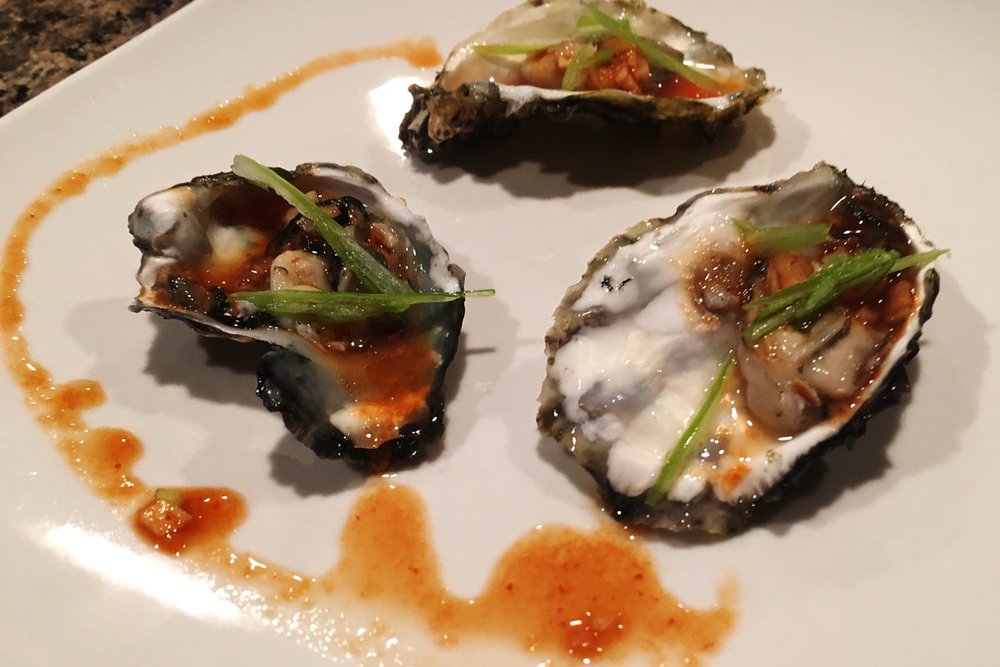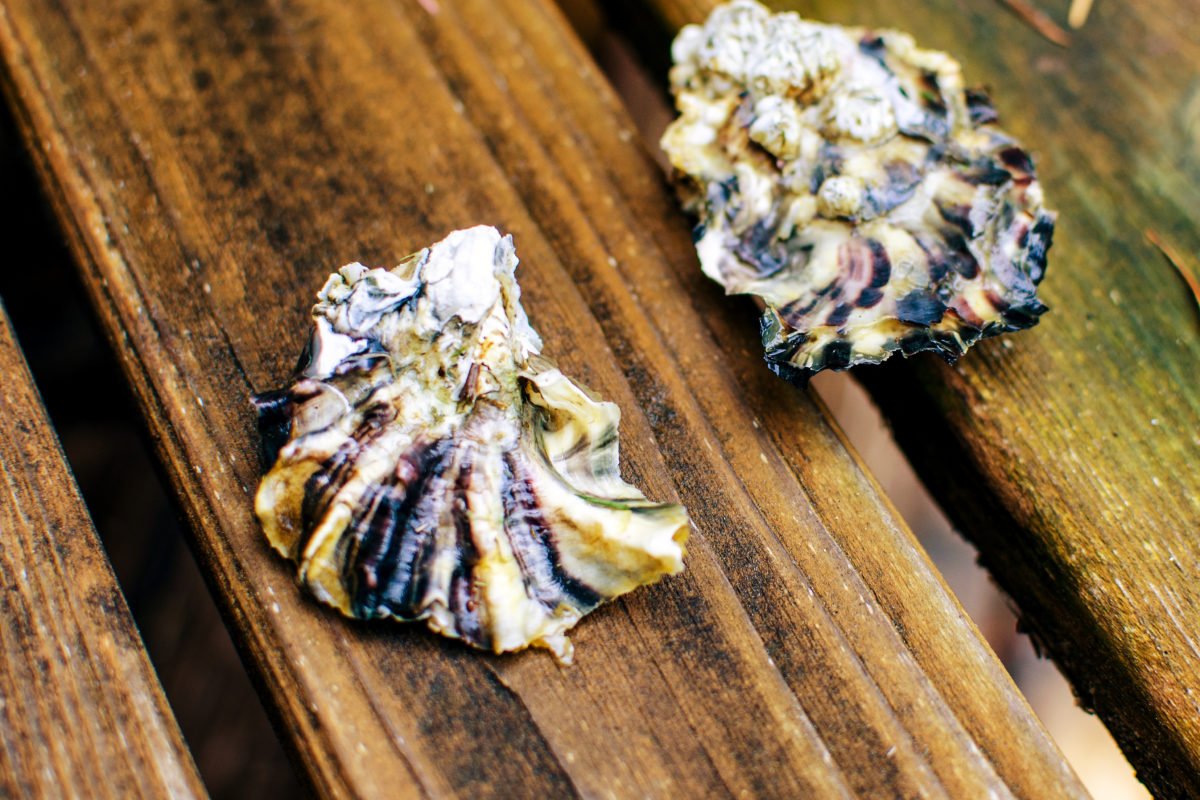I just finished what is quickly becoming a yearly trip to Washington state. Last year, I visited the San Juan Islands and fished Haro Straight, located along the western border of San Juan Island. This time, I stayed with my sister who just purchased a house along the shorelines of south Puget Sound. And like my last excursion to the Pacific Northwest, the fishing did not disappoint.
Minds are like oysters. They spoil if you pry them open. ~Willa Gibbs
Being from the desert, Washington is like visiting a foreign country. There are monstrous trees towering over salty blue water. The weather can only be described as refreshing, and it is a much appreciated break from the arid 100 degree days of the southeastern Utah desert. Heading outdoors is an unfamiliar experience: all the animals and plants are basically strangers.
While at my sister's, we caught salt water fish, a far cry from the lake trout I am accustomed to. The first fish pulled onto the boat was a dogfish. The dogfish is definitely an inappropriately named creature, as it is actually a shark. This "fish" definitely has the teeth of a shark, so it is not a hard animal to identify. But like I said, pulling that onto the boat was a very different experience from reeling in a rainbow trout.
As with visiting any foreign place, not only were the animals and plants different, but the food was also a completely different experience. I don't often get to experience seafood, much less fresh seafood. Sure, I have had my share of shrimp, most of which are farm raised. Our super market also carries a variety of fish, such as salmon, tilapia, and cod. As with the salmon, most of these are farm raised and have been frozen for a significant amount of time. I still partake if a sale is happening, but not often. And those frozen, farm-raised fish can not compare to the fresh, catch of the day fish I experienced while visiting Washington.
One of the more unique dishes I tried was the Kumamoto oyster. The Kumamoto oyster originated in Japan, but somehow my sister has them growing right in bay in her backyard. When the tide was low, we ventured out into the muddy bottoms and dug clams and oysters. Kumamotos, known for their surprising sweet flavor and beautifully sculpted shells, are one of the most popular oysters for eating. I have tried oysters in restaurants before, and I was very hesitant to give them another chance. I would best describe them as, well, for lack of a better word, snot. I was not a fan of the taste, texture, or even sight of the oysters from my past dining experiences.
As I am the first to admit I am not a fan of oysters, I will also be the first to admit that I have misjudged the Kumamoto based on my prior experiences. I have stereotyped all oysters to be disgusting and that was not fair of me. Kumamoto oysters are simply fantastic.
Before shucking the oysters, allow them to sit covered in salt water. You can do fresh water, but you should not soak the oyster for more than 20 minutes since the fresh water will kill them. I know that sounds counter-intuitive, as you are going to be eating the oyster so why do you care if it dies, right? In order to preserve the flavor of the oyster and to keep them from drying out, you don't want them to be dead before consuming them. So, back to cleaning the oysters! Cover them with salt water and allow to soak. I let mine soak for a couple of hours. During this time, the oysters will filter water through their bivalve system. This filtration process is how the oyster eats. He pulls in lots of sand and filters out microorganisms for dining on. This process is also why oysters and clams are very sandy. Nothing is worse than biting down on a gritty, sandy oyster! By placing the oyster in a bucket of water, the creature will filter like it normally does but without the ocean bottom to take in, it will eventually filter all of the sand out. It works amazing and is a step worth taking when preparing clams and oysters.
Since this was my first time preparing fresh caught oysters, I had to learn how to shuck them properly. It isn't too difficult, but practice definitely makes it easier, so does a shucking knife. Having only shucked two oysters at this point in time, I think this link provides a better tutorial on how to get your oyster on the half shell for eating: How to Shuck an Oyster!
While the Kumamoto is a fantastic tasting oyster, this slightly spicy sauce was what took the culinary experience from fantastic to phenomenal! In a small bowl, mix together a tablespoon of each of the following ingredients: sriracha, lime juice, minced garlic, minced shallot, rice wine vinegar, and soy sauce. This will dress a dozen or so oysters, but you can make as much or as little of the sauce as you need, just follow the simple rule of equal proportions for each ingredient.
This kumamoto oyster shooter sauce is simply sriracha, lime juice, minced garlic, minced shallot, rice wine vinegar, and soy sauce.
Drizzle the sauce over the oysters on their half shell, add a few thin slices of green onion, and slurp that baby down! The combination of the slightly spicy vinegar sauce and the sweet piece of oyster is perfection. They texture of the kumamoto is tender, but not chewy. The sauce creates this beautiful balance of spicy and sweet, but there is also a salty element created by the ocean water in the oyster. It is one delicious bite. And I followed it with just a few more!
Happy Hunting! (And Oyster Harvesting)

Kumamoto Oyster Shooters
Ingredients
- 12 shucked kumamoto oysters
- 1 Tablespoon sriracha
- 1 Tablespoon lime juice
- 1 Tablespoon minced garlic
- 1 Tablespoon minced shallot
- 1 Tablespoon rice wine vinegar
- 1 Tablespoon soy sauce
Instructions
- Once oysters are shucked and cleaned, leave on shell for drizzling sauce over.
- In a small bowl mix together the sriracha, lime juice, garlic, shallot, rice wine vinegar, and soy sauce.
- Taste for desired heat level. If more heat is desired slowly add more sriracha.
- Drizzle sauce over oysters and enjoy!




